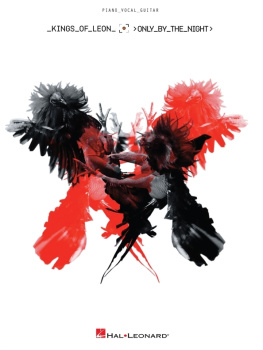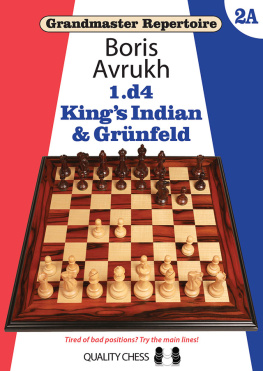Leon Livaić - Chessable: Dismantling Kings Indian: Razor - Sharp Makagonov
Here you can read online Leon Livaić - Chessable: Dismantling Kings Indian: Razor - Sharp Makagonov full text of the book (entire story) in english for free. Download pdf and epub, get meaning, cover and reviews about this ebook. genre: Children. Description of the work, (preface) as well as reviews are available. Best literature library LitArk.com created for fans of good reading and offers a wide selection of genres:
Romance novel
Science fiction
Adventure
Detective
Science
History
Home and family
Prose
Art
Politics
Computer
Non-fiction
Religion
Business
Children
Humor
Choose a favorite category and find really read worthwhile books. Enjoy immersion in the world of imagination, feel the emotions of the characters or learn something new for yourself, make an fascinating discovery.

- Book:Chessable: Dismantling Kings Indian: Razor - Sharp Makagonov
- Author:
- Genre:
- Rating:3 / 5
- Favourites:Add to favourites
- Your mark:
- 60
- 1
- 2
- 3
- 4
- 5
Chessable: Dismantling Kings Indian: Razor - Sharp Makagonov: summary, description and annotation
We offer to read an annotation, description, summary or preface (depends on what the author of the book "Chessable: Dismantling Kings Indian: Razor - Sharp Makagonov" wrote himself). If you haven't found the necessary information about the book — write in the comments, we will try to find it.
Leon Livaić: author's other books
Who wrote Chessable: Dismantling Kings Indian: Razor - Sharp Makagonov? Find out the surname, the name of the author of the book and a list of all author's works by series.
Chessable: Dismantling Kings Indian: Razor - Sharp Makagonov — read online for free the complete book (whole text) full work
Below is the text of the book, divided by pages. System saving the place of the last page read, allows you to conveniently read the book "Chessable: Dismantling Kings Indian: Razor - Sharp Makagonov" online for free, without having to search again every time where you left off. Put a bookmark, and you can go to the page where you finished reading at any time.
Font size:
Interval:
Bookmark:
[Event ?] [Site ?] [Date ????.??.??] [Round ?] [White Introduction] [Black Introduction ] [Result *] { Hello everyone! My name is Leon Livaic and I am a 19 years old International Master from Croatia. This is my first chessable course and I hope you will enjoy it! The course is a cutting-edge opening repertoire for White, which means that we will go for the critical lines in every position, trying to play for a big advantage out of the opening, and believe me, in most cases you will achieve it! I will teach you how to deal with the Kings indian Defense when playing White. } 1. d4 Nf6 2. c4 g6 { Whenever you see 2 g6, its a sign that your opponent wants to win the game at all costs. } 3. } 3.
Nc3 Bg7 { After 3 Bg7 the KID arises! Unlike in every other possible opening, Black is giving up center control and will willingly have less space, but in return he will try to play actively and in most cases close the center so that he can attack on the kingside. The Kings Indian Defence has been used for many decades by the strongest players in the world. Only some of them are Garry Kasparov, Bobby Fischer, Mikhail Tal, Svetozar Gligoric and Viktor Korchnoi. However, the opening has stopped being popular on superGM level in the last decade, as engines became stronger and concluded that the opening is not too sound @@StartBracket@@Whites space advantage seems to be a crucial factor@@EndBracket@@. Still, for club level players and even stronger players @@StartBracket@@I think up to 2500+ FIDE rating@@EndBracket@@ it is often a nuisance. } 4. e4 d6 5. h3 { I am going to teach you how to crush the Kings Indian Defence with White with an ambitious and very straightforward line, starting with 5. h3. h3.
This move was and still is Anatoly Karpovs choice, and also the choice of worlds current #2 Fabiano Caruana. The point of Whites strategy is to delay the development of the knight from g1 and play Be3 first @@StartBracket@@with Ng4 being impossible now@@EndBracket@@, and when Black plays his normal plan with e5, we will close the position with d5 and play the move g4, making sure that Blacks f5 break backfires because his king will be too open when the g-file open, and with White we will almost never play 0-0. Because of that Black players have been trying to play some other strategy against this line lately, and not to play their normal e5 stuff. So here is the list of chapters we are going to cover in this course and a few words about them. In the popular sideline with 5 Nbd7 we will play 8. f3N, surprising our opponents instead of complying to play 8.
Qc2 with a worse version of the main line. In the rare sidelines 5 e5 and 5 c5 we will exchange the pawns and queens and try to play a better endgame with the Black king in the center. After 6 c5 we will play 7. Nf3, aiming for the Maroczy structures with more space instead of going 7. d5 transposing to a Benoni. g4, not transposing to the very theoretical Makogonov line with 7. g4, not transposing to the very theoretical Makogonov line with 7.
Nf3 The more and more popular 6 Nc6 will be met by 7. d5, seizing space, and we will also play f4 and g4 in some lines! After 6 c6 and 6 a6 we will play 7. Nf3 as Black has made a not too useful move, and also g4 could be met by b5 in some lines, opening the position on the other side of the board and claiming that White has a lot of weaknesses. In the Main Line with 6 e5 we will play 7. d5 and 8. g4, as mentioned before, trying to restrict all counterplay from Black.
After we finish the theoretical part we will come to the Model Games chapter, in which I am going to analyze some of my own games in classical chess in this line, as well as some other games played by strong players. I think its very important for the author to have experience in what he is teaching. The games will not be analyzed in such a great detail, they are more examples of which kind of positions and structures you can expect. I hope you will not be discouraged with the number of the lines and complexity of the positions and that the 5. h3 6. 9 f5 #1] [Result *] 1. d4 Nf6 2. c4 g6 3. Nc3 Bg7 4. e4 d6 5. h3 Nbd7 { A tricky sideline, sometimes used by GMs Smirin and Saric. } 6. } 6.
Be3 { The most natural square for the bishop, as there is no more Ng4 for Black to kick it away. } 6 e5 { Blacks typical KID reaction, trying to close the center and break either with c6 or f5 in the future. } 7. d5 Nc5 { This is the point of delaying 0-0. Black immediately attacks the e4-pawn, making it more difficult for white to continue with his usual plan, because now he has to play either Qc2, placing the queen on a worse square than d2, or f3 before g4, allowing Nh5. f3 { A novelty, but 8. f3 { A novelty, but 8.
Qc2 puts the queen on a weird square, so it seems that Black achieved something. With 8. f3 White goes for an ambitious setup, but also very double-edged. Its worth mentioning that after 5 Nbd7 there are many possible moves and lines which you may prefer for White if you decide you dont want to risk too much. } 8 Nh5 { If Black doesnt play this move, he is allowing White to develop with Qd2 and then play g4, and with it he poses immediate pressure with f5 and Qh4+. } 9.
Nge2 f5 10. exf5 gxf5 { 10Bxf5 11.g4 loses. } 11. Qc2 { This is the move which I like the most. White is preparing 0-0-0 and maybe g4 in the future, opening the kingside. } 11 Qh4+ 12.
Bf2 Qxc4 13. Nd4 { Is winning for White as after Qb4 there is Bb5+ followed by a3 and b4, trapping the queen. } * [Event ?] [Site ?] [Date ????.??.??] [Round ?] [White 5 Nbd7] [Black 5 Nbd7 vs. 9 f5 #2] [Result *] 1. d4 Nf6 2. Nc3 Bg7 4. e4 d6 5. h3 Nbd7 { A tricky sideline, sometimes used by GMs Smirin and Saric. } 6. } 6.
Be3 { The most natural square for the bishop, as there is no more Ng4 for Black to kick it away. } 6 e5 { Blacks typical KID reaction, trying to close the center and break either with c6 or f5 in the future. } 7. d5 Nc5 { This is the point of delaying 0-0. Black immediately attacks the e4-pawn, making it more difficult for white to continue with his usual plan, because now he has to play either Qc2, placing the queen on a worse square than d2, or f3 before g4, allowing Nh5. f3 { A novelty, but 8. f3 { A novelty, but 8.
Qc2 puts the queen on a weird square, so it seems that Black achieved something. With 8. f3 White goes for an ambitious setup, but also very double-edged. Its worth mentioning that after 5 Nbd7 there are many possible moves and lines which you may prefer for White if you decide you dont want to risk too much. } 8 Nh5 { If Black doesnt play this move, he is allowing White to develop with Qd2 and then play g4, and with it he poses immediate pressure with f5 and Qh4+. } 9.
Nge2 f5 10. exf5 gxf5 { 10Bxf5 11.g4 loses. } 11. Qc2 { This is the move which I like the most. White is preparing 0-0-0 and maybe g4 in the future, opening the kingside. } 11 O-O 12.
O-O-O { Developing and threatening g4. } 12 f4 { Otherwise 13. g4 or 13. Bxc5 dxc5 14. g4, taking control of the e4-square. } 13.
Bxc5 Bf5 { 13dxc5 14.Ne4 leads to the same structure which we covered again. } 14. Ne4 Bxe4 15. fxe4 { 15.Qxe4 also gives an advantage. } 15 dxc5 16. Kb1 { This position again looks extremely good for White.
There is a clear plan of going Be2-Bg4, either trading or activating this bishop. D6 is again always in the air and Blacks dark-squared bishop remains passive. } * [Event ?] [Site ?] [Date ????.??.??] [Round ?] [White 5 Nbd7] [Black 5 Nbd7 vs. 9 f5 #3] [Result *] 1. d4 Nf6 2. Nc3 Bg7 4. e4 d6 5. h3 Nbd7 { A tricky sideline, sometimes used by GMs Smirin and Saric. } 6. } 6.
Be3 { The most natural square for the bishop, as there is no more Ng4 for Black to kick it away. } 6 e5 { Blacks typical KID reaction, trying to close the center and break either with c6 or f5 in the future. } 7. d5 Nc5 { This is the point of delaying 0-0. Black immediately attacks the e4-pawn, making it more difficult for white to continue with his usual plan, because now he has to play either Qc2, placing the queen on a worse square than d2, or f3 before g4, allowing Nh5. f3 { A novelty, but 8. f3 { A novelty, but 8.
Next pageFont size:
Interval:
Bookmark:
Similar books «Chessable: Dismantling Kings Indian: Razor - Sharp Makagonov»
Look at similar books to Chessable: Dismantling Kings Indian: Razor - Sharp Makagonov. We have selected literature similar in name and meaning in the hope of providing readers with more options to find new, interesting, not yet read works.
Discussion, reviews of the book Chessable: Dismantling Kings Indian: Razor - Sharp Makagonov and just readers' own opinions. Leave your comments, write what you think about the work, its meaning or the main characters. Specify what exactly you liked and what you didn't like, and why you think so.






